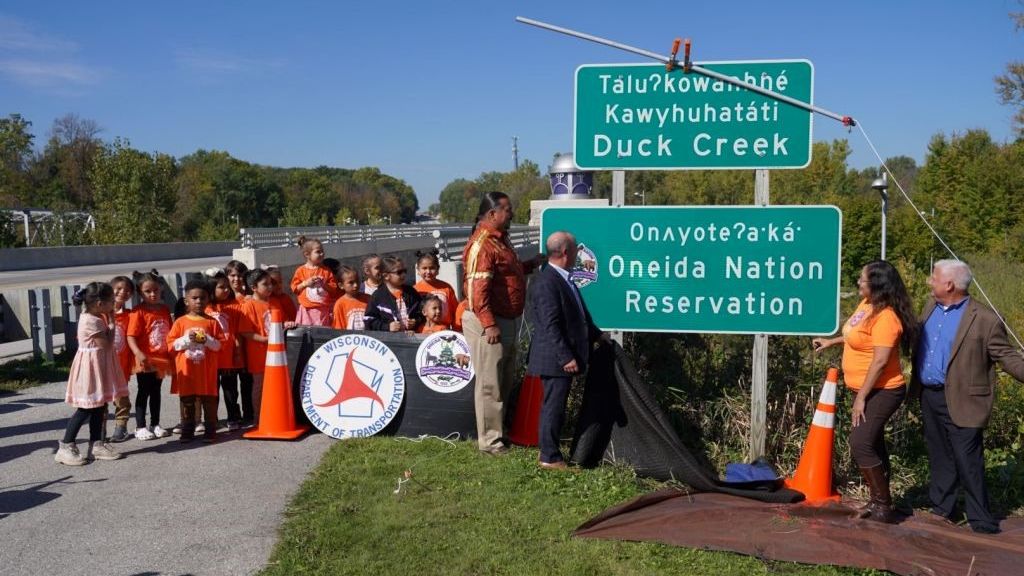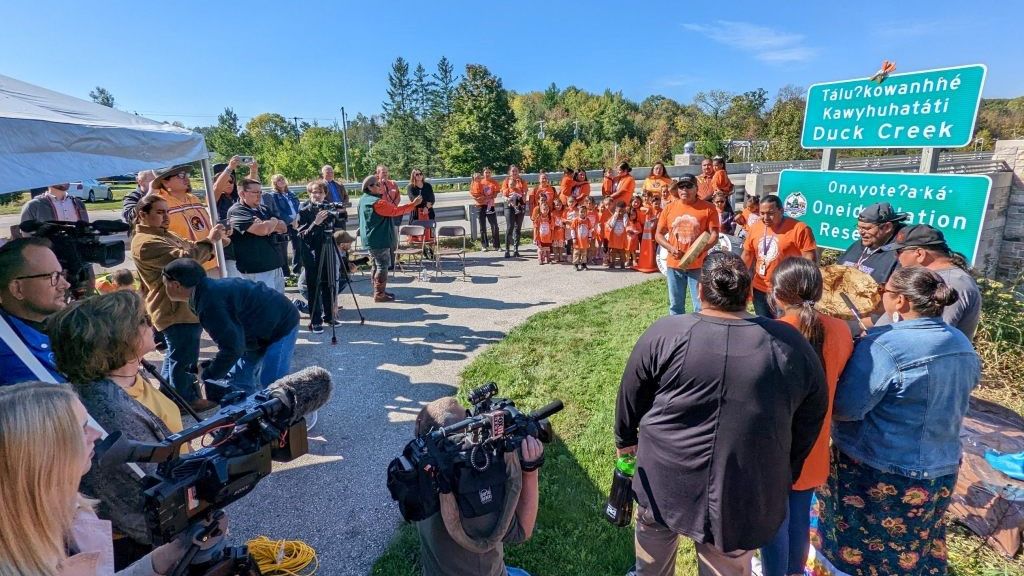WISCONSIN — The Wisconsin Department of Transportation and the Oneida Nation unveiled dual-language highways signs on Friday.
These signs — written in both the Oneida and English languages — signify the Oneida Nation’s tribal boundaries and other features.
They’re a part of a WisDOT initiative that launched in 2021. The statewide initiative was approved by the Federal Highway Administration.

“We are honored to join the Oneida Nation and offer dual-language highway signs on their tribal lands,” WisDOT secretary Craig Thompson said. “Thanks to Governor Evers’ commitment to tribal sovereignty, we are proud to deepen the longstanding cooperation between state and tribal governments. Together we are fostering a stronger sense of place and connecting travelers to history by sharing Native American heritage.”
One of the new signs was unveiled Friday at the westbound Duck Creek bridge walking path off of Highway 54 in Oneida, Brown County. On this particular sign are the words "Taluʔkowanhné" (pronounced Da-lew-go-wonh-NAY) and "Kawyhuhatati" (pronounced Gaw-who-ha-DA-di).
The first word translates to “Place of Bountiful Ducks,” while the second means “River Flowing Along.”
All signs will also feature the Oneida Tribe seal and the traditional name for the reservation in the Tribe’s native language, that name being "Onʌyoteʔa:ká" (pronounced O-na-yo-day-aah-GAaa). It translates to “The People of the Upright Stone.”
“Oneida language is the first language of our ancestors and we appreciate the state of Wisconsin for their recognition and respect of our sovereignty, language and traditions,” Oneida Chairman Tehassi Hill said. “Native preservation and languages go to the heart of a Tribe’s unique cultural identities, traditions, spiritual beliefs, and self-governance. We look forward to revitalizing the Oneida language through these signs.”
Signs also have an English-language version that’s beneath the Oneida Nation version. Oneida Nation is now the second Wisconsin tribe to install dual-language signs.
All of Wisconsin’s federally recognized tribal communities are encouraged to apply for the program.



